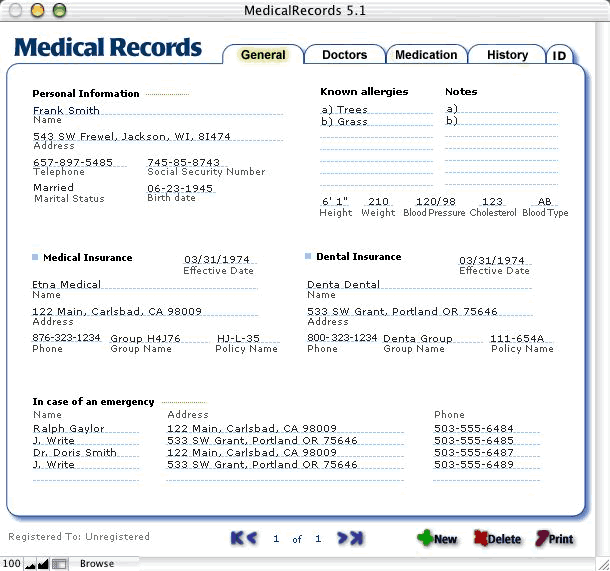Ehrlichiosis in dogs pet health network. [Editor's note this article covers e. Canis which causes only one type of ehrlichiosis. E. Ewingii and e. Chaffeensis are different infections and create different clinical diseases.]. Ehrlichia in dogs petcoach. Ehrlichia is a type of bacteria called rickettsia. Ehrlichia organisms are spread to dogs by the bite of an infected tick. There are several different methods used to diagnose the condition. Ehrlichia canis sintomas, tratamiento y prevención. Ehrlichiosis is the general name used to describe several bacterial diseases that affect animals and humans. Human ehrlichiosisis a disease caused by at least three different ehrlichial species in the united states ehrlichia chaffeensis, ehrlichia ewingii, and a third ehrlichia species provisionally called ehrlichia murislike (eml). Ehrlichiosis and related infections generalized conditions. Canine ehrlichiosis is primarily caused by ehrlichia canis, which predominantly involves monocytes; although it is not considered a primary zoonosis, human. Ehrlichia canis microbewiki. Ehrlichia canis is a small, rod shaped, intracellular, ticktransmitted, gramnegative, {alpha}proteobacterium transmitted by the brown dog tick, rhipicephalus sanguineus. It resides as a microcolony inside an intracellular vacuole that is membranelined and is mainly within monocytes and macrophages of mammalian hosts. Ehrlichia chaffeensis an overview sciencedirect topics. Ehrlichia chaffeensis contains several tandem repeat proteins (trp) and ankyrin repeat proteins that are secreted through the type 1 secretion system (t1ss) and interact with diverse host target proteins or bind host cell dna and modulate expression of host cell genes [53,98100]. Ehrlichiosis (canine) wikipedia. More ehrlichia canis videos. Rickettsial infection in dogs petmd. The most common species of rickettsial organisms that cause ehrlichiosis in dogs are ehrlichia canis, ehrlichia chaffeensis, and ehrlichia ewingii. Ehrlichiosis can also infect humans, but people do not get infected directly from a dog, but through a tick bite. The species of ehrlichia that most often affect people is ehrlichia chaffeensis.
Ehrlichiosis (canine) wikipedia. More ehrlichia canis videos.
Ehrlichia canis image results. Ehrlichia canis is the pathogen of animals. Humans can become infected by e. Canis and other species after tick exposure. German shepherd dogs are thought to be susceptible to a particularly severe form of the disease, other breeds generally have milder clinical signs. Ehrlichia canis sintomas, tratamiento y prevención. Ehrlichia canis qué es, sintomas y tratamiento la ehrlichiosis canina es una enfermedad que afecta sobre todo a los perros (aunque también se han dado casos en humanos y felinos), y en perros está causada principalmente por el agente ehrlichia canis, una bacteria intracelular, parásita, del orden rickettsiales, que afecta al organismo de los perros infectados de distintas maneras. Ehrlichia canis. Ehrlichia canis microbewiki. Ehrlichia canis is the most common rickettsial species involved in ehrlichiosis in dogs, but occasionally other strains of the organism will be found. Because of its origin in military dogs in vietnam, it has also been called tracker dog disease and tropical canine pancytopenia. Ehrlichia canis wikipedia. Ehrlichia canis is an obligate intracellular bacterium that acts as the causative agent of ehrlichiosis, a disease most commonly affecting canine species. This pathogen is present throughout the united states (but is most prominent in the south), south america, asia, and africa. Ehrlichia in dogs symptoms and treatment 1800petmeds®. While most people are most concerned about the tick transmitted lyme disease, there is another disease transmitted by certain species of ticks known as ehrlichia.Signs of ehrlichia in dogs can occur 13 weeks after the bite of an infected tick, and in the acute phase of the disease, symptoms may last up to a few weeks. Ehrlichiosis in dogs vca animal hospital. Ehrlichia canis is the pathogen of animals. Humans can become infected by e. Canis and other species after tick exposure. German shepherd dogs are thought to be susceptible to a particularly severe form of the disease, other breeds generally have milder clinical signs. Ehrlichiosis causes, symptoms, rash, diagnosis, treatment. Ehrlichiosis tick diseases causes, symptoms, rash and diagnosis, long term effects, treatment. Doxycycline is the first line treatment for adults and children of all ages and should be initiated immediately whenever ehrlichiosis is suspected.
Ehrlichiosis (canine) wikipedia. Also try. Ehrlichia canis veterinarians. Ehrlichia canis is a small, rod shaped, intracellular, ticktransmitted, gramnegative, {alpha}proteobacterium transmitted by the brown dog tick, rhipicephalus sanguineus. It resides as a microcolony inside an intracellular vacuole that is membranelined and is mainly within monocytes and macrophages of mammalian hosts. How to treat the tickborne disease ehrlichiosis in dogs. Signs and symptoms of ehrlichiosis may include fever. Lethargy. Loss of appetite. Weight loss. Abnormal bleeding (e.G., Nosebleeds, bleeding under the skin that looks like little spots enlarged lymph nodes. Enlarged spleen. Pain and stiffness (due to arthritis and muscle pain). Ehrlichiosis symptoms and causes mayo clinic. Ehrlichia is a bacterial infection that is transmitted through tick bites and can cause high fevers, rash and bleeding disorders in several different species. Some strains of ehrlichia have the potential to cause serious disease in people as well. Ehrlichia canis is the form of ehrlichia typically seen in dogs. Ehrlichia infection (canine) mar vista animal medical center. Ehrlichia are a special type of bacteria which infect and live within the white blood cells of their hosts. Ehrlichia are spread from host to host by tick bites and their intracellular location makes them difficult to remove as most antibiotics do not penetrate to the inside of cells. Ehrlichia canis qué es, sintomas y tratamiento la ehrlichiosis canina es una enfermedad que afecta sobre todo a los perros (aunque también se han dado casos en humanos y felinos), y en perros está causada principalmente por el agente ehrlichia canis, una bacteria intracelular, parásita, del orden rickettsiales, que afecta al organismo de los perros infectados de distintas maneras. Ehrlichiosis (canine) wikipedia. Ehrlichia canis is the pathogen of animals. Humans can become infected by e. Canis and other species after tick exposure. German shepherd dogs are thought to be susceptible to a particularly severe form of the disease, other breeds generally have milder clinical signs. Antibiotic clearance of ehrlichia canis from dogs infected by. Ehrlichia canis is the etiologic agent of canine monocytic ehrlichiosis (cme) and is a useful model for tickborne zoonotic pathogens, many of which infect dogs. The purpose of this study was to evaluate rifampin and doxycycline regimens for clearance of e. Canis infections in addition to alleviation of cme.
Demonstrate Meaningful Use Of Certified Ehr Technology
Ehrlichiosis in dogs vca animal hospital. Ehrlichia canis is the most common rickettsial species involved in ehrlichiosis in dogs, but occasionally other strains of the organism will be found. Because of its origin in military dogs in vietnam, it has also been called tracker dog disease and tropical canine pancytopenia. Ehrlichiosis home ehrlichiosis cdc. If a tick carrying the bacterium that causes ehrlichiosis has been feeding on you for at least 24 hours, the following flulike signs and symptoms may appear usually within seven to 14 days of the bite mild fever. Headache. Chills. Muscle aches. Nausea. Vomiting. Diarrhea. Fatigue. Loss.
Medical Records Management Nashville
Rickettsial infection in dogs petmd. Ehrlichiosis in dogs is a rickettsia infection caused by the organisms ehrlichia canis and ehrlichia lewinii. These bacteria are spread by the brown dog tick and the lone star tick, respectively. Rickettsiae are a type of bacteria that inhabit a cell, in this case, the body's white blood cells. Ehrlichiosis canina vets. EtiologÍa es una enfermedad de distribución mundial causada por la rickettsia ehrlichia canis, que se transmite a través de garrapatas del género rhipicephalus sanguineus o bien por transfusión sanguínea de sangre infectada. Canine ehrlichiosis symptoms, cause, treatment tick borne. · ehrlichiosis is an infectious disease caused by a type of rickettsial organisms, which are diseasecausing parasites (similar to bacteria). The most common species of rickettsial organisms that cause ehrlichiosis in dogs are ehrlichia canis, ehrlichia chaffeensis, and ehrlichia ewingii. Ehrlichiosis lyme disease. Bacteria from the genus ehrlichia have long been recognized as veterinary pathogens, but the first human case of ehrlichiosis was not identified until 1986.Since that year, the number of case reports has grown fairly steadily and currently stands at around 500 per year. Ehrlichiosis in dogs petmd. Signs and symptoms of ehrlichiosis may include fever. Lethargy. Loss of appetite. Weight loss. Abnormal bleeding (e.G., Nosebleeds, bleeding under the skin that looks like little spots enlarged lymph nodes. Enlarged spleen. Pain and stiffness (due to arthritis and muscle pain). Ehrlichiosis in dogs petmd. Dogs can display a variety of symptoms during the acute phase of canine monocytic ehrlichiosis, including fever. Lethargy. Poor appetite. Lymph node enlargement. Abnormal bruising and bleeding. Chronic eye inflammation. Neurologic abnormalities. Occasionally lameness. Ehrlichiosis and anaplasmosis infectious diseases merck. Because lyme disease and babesiosis have the same tick vector ehrlichiosis and anaplasmosis are caused by rickettsiallike bacteria. Ehrlichiosis is caused mainly by ehrlichia chaffeensis; anaplasmosis is caused by anaplasma phagocytophilum. Both are transmitted to. Ehrlichiosis diagnosis and treatment mayo clinic. · lifestyle and home remedies. If you find a tick on your body, don't be alarmed. If you remove the tick within 24 hours of its attachment, it's unlikely.







0 comments:
Post a Comment